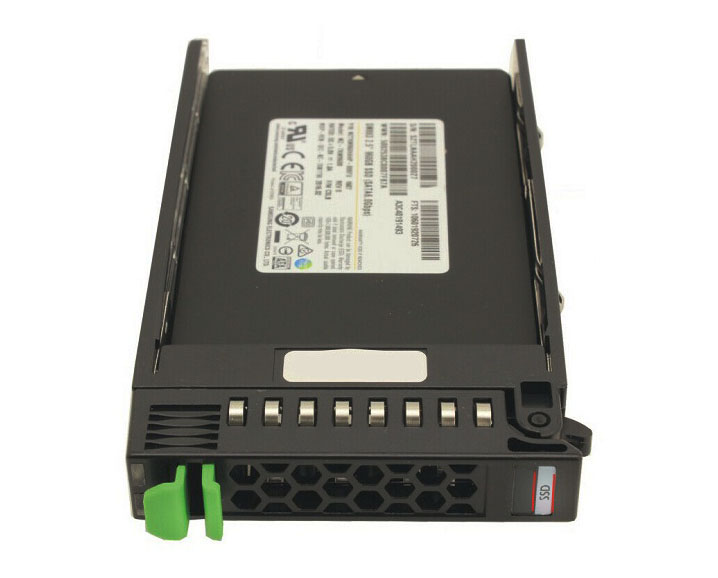
The Past, Present and Future of Computer Storage
Introduction
Ever wonder how we went from floppy disks to terabytes of storage in our pockets? Not that long ago, you were loading programs on 5 1/4-inch floppy disks that could hold a whopping 360 KB. Now you're streaming 4K movies over the air to your phone. What a wild ride it's been. Hard drives dominated for decades but now solid state drives are taking over. Names like Seagate, Western Digital, and Samsung are as familiar as old friends. But the future is even more exciting. Soon 10 terabyte SD cards will be as quaint as those floppies. With cloud storage, DNA, and holographic storage on the horizon, you'll be carrying around petabytes in your pocket. The advances in computer storage make sci-fi look positively passé. So sit back and enjoy this look at how we got from there to here and where we're boldly going next. The future is storage, and it's going to blow your mind.
A Brief History of Storage: From Punch Cards to Solid State Drives
Storage tech has come a long way since the punch card machines of the 1700s. Those clunky cards were how we first input data into computing devices. Then came magnetic storage - floppy disks, hard disk drives (HDDs), and tapes that dominated for decades.
In the 1950s, solid-state drives, or SSDs were invented. SSDs have no moving parts and store data on microchips, making them faster and more durable than HDDs. But SSDs were too expensive for most until recently.
In 1972, IBM released the first floppy disk drive, the FD-150. Floppy disks were a huge leap forward, allowing easy data transfer between computers for the first time. Though floppies had a short life, HDDs and SSDs were born from that legacy of innovation.
Today, SSDs are dropping in price and HDDs still offer lots of storage for little money. SSDs boot and load faster, so use one for your operating system and programs. Use an HDD for photos, videos, and files. Or get a hybrid drive with both SSD and HDD storage.
The future is blazing-fast all-SSD storage, storage in the cloud, and holographic storage with enormous capacity. What an amazing journey storage tech has been on - from punch cards to futuristic holographic storage and beyond! The pace of progress is stunning. What will be possible in another 50 years?
SSD vs. HDD: Which Storage Option Is Right for You?
If you're in the market for extra computer storage, you've got two main options: hard disk drives (HDDs) or solid-state drives (SSDs). How do you choose between them? Let's break it down.
HDDs have been around for decades and offer lots of storage for little money. They use spinning platters to store your data, so they're cheap but slower. If you need terabytes of storage for less cash, a 5TB, 8TB, or 16TB hard drive, or other storage denominations as per your need is probably your best bet.
SSDs, on the other hand, use flash memory chips with no moving parts. They cost more than HDDs, but read and write data way faster—we're talking 10 times faster than a typical hard drive. SSDs are also silent, more durable, and more energy efficient.
For most casual users, an SSD for a laptop means snappier performance overall compared to an HDD. If speed and performance are priorities, the extra money for an SSD is worth it. Gamers and creative professionals will also benefit greatly from the faster speeds of a solid-state drive.
In the end, it comes down to your needs and budget. If you want fast performance for your operating system and frequently used programs, get an SSD. If you need copious amounts of cheap storage and don't mind some lag, an HDD will work great. For the best of both worlds, get a smaller SSD for your system drive and a larger HDD for file storage. With options for every need and budget, there’s a storage solution for you.
Which brand should you choose?
When it comes to choosing an external or internal storage brand, you have a few solid options to consider based on your needs and budget.
Western Digital
Western Digital (WD) is one of the most well-known and trusted brands for storage. Their My Passport Ultra is a top choice for an external hard drive. It offers a sleek design, strong security features, and high storage capacity up to 5TB. WD also makes excellent internal SSDs like the WD Black SN850X, which provides some of the fastest speeds for gaming PCs.
Seagate
Another reputable brand is Seagate. Their Backup Plus external hard drives are very popular and provide lots of storage for backing up your important files. They work with both Mac and Windows and come in a range of sizes up to 5TB. Seagate also produces high-performance internal SSDs, though their prices tend to be a bit higher than competitors.
Samsung
For internal solid-state drives (SSDs), Samsung is a top brand. Their 870 EVO SSD is considered one of the best overall with fast read/write speeds, high reliability, and large storage amounts of up to 4TB. Samsung's SSDs do come at a premium price, however. If budget is a concern, you may want to consider other brands that offer similar performance for less.
In the end, you can't go wrong with any of these major brands. Evaluate your specific needs, read reviews to determine the best value, and go with a trusted name that fits your budget. The future is bright for continued improvements in computer storage, with higher capacities, faster speeds, and lower costs on the horizon.
The Future of Storage: NVMe, Optane, and Beyond
The Future is Fast and Smart
Storage technology has come a long way in a short time. As our world becomes increasingly digital and data-driven, we need storage solutions that can keep up. Two technologies paving the way are NVMe and Intel’s Optane memory.
NVMe (Non-Volatile Memory Express) is a protocol optimized for SSDs that accelerates data transfer speeds. An NVMe SSD can achieve up to 6 times faster speed than traditional SATA SSDs. Many laptops and desktop PCs now come with built-in NVMe slots and connectors to take advantage of these lightning-fast speeds.
Intel’s Optane memory is a type of solid-state storage that acts as a cache to speed up your computer. Optane modules plug into the NVMe slot on your motherboard and use an advanced 3D XPoint memory technology with higher throughput and lower latency than NAND flash. The Optane memory learns which files and applications you use most frequently and accelerates them by storing them in the Optane cache.
Though Intel recently announced the discontinuation of their Optane line, experts predict emerging technologies like NVMe, GPUs, and DPUs (Data Processing Units) will shape the future of enterprise storage. NVMe-based storage arrays with GPU and DPU acceleration could achieve unheard-of performance, intelligence, and efficiency. The future of storage is fast and smart - are you ready to upgrade?
Conclusion
So there you have it, the past, present and future of computer storage in a nutshell. We've come a long way from punch cards and magnetic tape. Today we have fast solid-state drives and portable storage options to suit any need. The future looks even more exciting with new technologies on the horizon that will provide nearly unlimited storage in the palm of your hand.
Storage is something we often take for granted in our technology-filled lives. But it's always good to understand how far we've come and appreciate the engineers and companies working hard to ensure we have plenty of space for all our digital lives. Keep your storage options up to date, back up your files, and get ready for a future of even more advanced and affordable solutions. The world of bits and bytes marches on!
